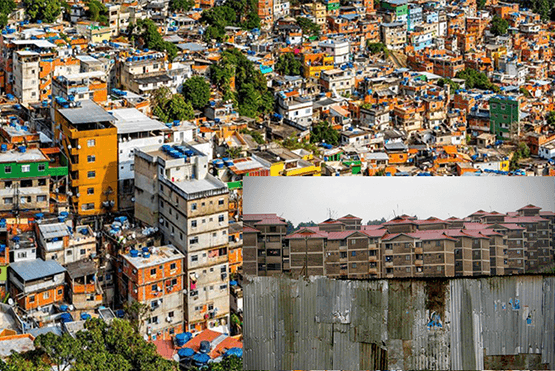Across the African continent, the issue of informal settlements, commonly referred to as “slums,” has become a critical challenge that demands innovative solutions. As urbanization continues to surge, slums have emerged as a complex problem characterized by inadequate housing, limited access to basic services, and dire living conditions. This article explores the imperative of transforming slums into viable affordable housing solutions, highlighting initiatives, strategies, and the potential for creating sustainable change in the lives of millions.
The Reality of Slums:
Slums are often the result of rapid urbanization, poverty, and inadequate urban planning. They are marked by densely populated areas with makeshift shelters lacking proper infrastructure, sanitation, and access to clean water. Slum dwellers face a range of challenges, from health risks to limited economic opportunities, perpetuating a cycle of poverty and social inequality.
5 Key Strategies in Transforming Slums into Sustainable Housing Solutions:
The transformation of slums into affordable housing solutions is a multi-faceted endeavor that requires collaboration among governments, NGOs, urban planners, and communities. Here are key strategies that can drive this transformation:
-
Upgrading Infrastructure:
Investment in infrastructure, including roads, water supply, sanitation, and electricity, is essential to improving living conditions in slums. Upgrading these services not only enhances the quality of life but also paves the way for integrated urban development.
-
Community Engagement:
Involving slum residents in the planning and decision-making processes empowers them to contribute to the development of their communities. Participatory approaches ensure that housing solutions align with the unique needs and aspirations of the residents.
-
Affordable Housing Construction:
Introducing affordable housing options within or near slum areas provides an opportunity for residents to transition from substandard shelters to safe and decent living spaces. These new housing units should be priced in a way that suits the income levels of slum dwellers.
-
Land Tenure Regularization:
Establishing clear land tenure rights for slum residents not only provides a sense of ownership but also paves the way for accessing credit and government services. Secure land tenure is a fundamental step toward sustainable transformation.
-
Integrated Urban Planning:
Incorporating slum transformation into broader urban development plans ensures that efforts are holistic and cohesive. This prevents the displacement of slum residents and promotes inclusive growth.
African Countries Transforming Slums into Affordable Housing Solutions
Several African countries have embarked on initiatives to transform slums into affordable housing solutions:
-
Kibera Upgrading Project, Kenya:
The Kibera slum in Nairobi has witnessed efforts to improve infrastructure, sanitation, and housing conditions. Community-driven initiatives, combined with government support, have led to visible improvements.
-
Ethiopian Social Housing Project:
Ethiopia’s affordable housing program has aimed to address the housing shortage by providing subsidized units to low-income citizens. This initiative has significantly impacted slum dwellers’ lives by offering secure and improved housing.
The transformation of slums into affordable housing solutions across Africa is not only a humanitarian imperative but also a strategic investment in sustainable urban development. By addressing the challenges of slums and involving local communities in the process, African nations can create thriving cities that offer decent living conditions and economic opportunities for all. This requires concerted efforts, innovation, and collaboration among stakeholders to build a future where slums are replaced with vibrant, inclusive neighborhoods.





